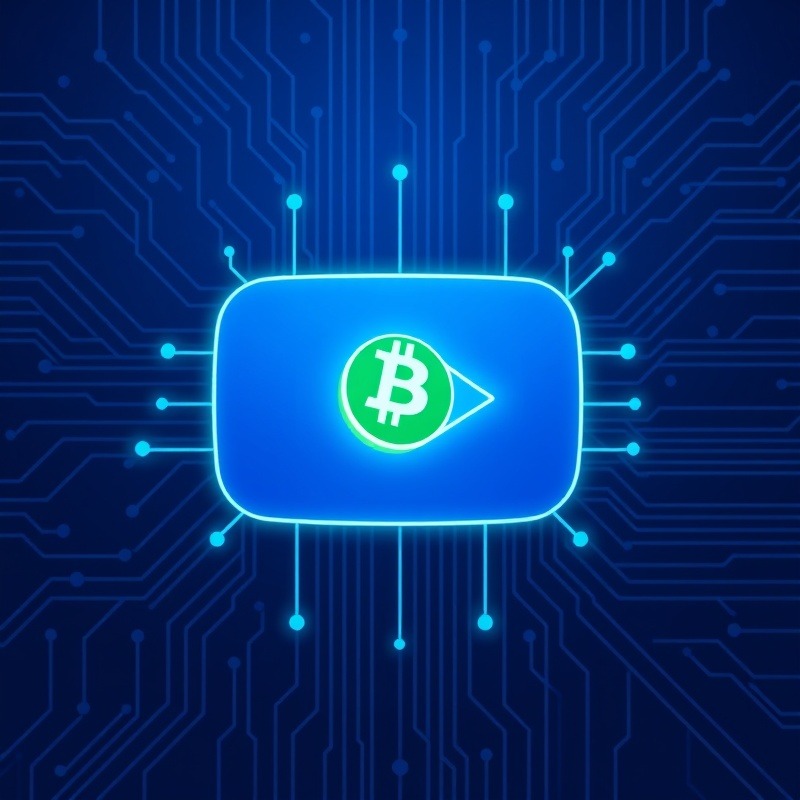
The Impending Rise of Digital Dollars: What You Need to Know
In a recent address during the White House crypto summit on March 7th, new US Treasury Secretary Scott Vent revealed a bold plan for the future of the US dollar. He pointed out that the US government intends to leverage stablecoins to safeguard the dollar's status as the world's reserve currency. This transition brings with it significant implications for the realms of cryptocurrency, finance, and individual investors alike.
In 'Digital Dollar Incoming could this be!', the discussion dives into the emerging landscape of stablecoins and their potential in maintaining the US dollar's prominence, prompting us to explore the implications of these developments further.
What Are Stablecoins and Why Do They Matter?
Stablecoins are a type of cryptocurrency designed to offer price stability, often pegged to an asset such as a fiat currency. Their primary allure lies in minimizing the volatility usually associated with traditional cryptocurrencies like Bitcoin and Ethereum. As the digital currency landscape matures, stablecoins could play a critical role in easing the adoption of digital currencies among the general public.
Centralized stablecoins, managed by governmental bodies, could lead to a structured financial ecosystem. Meanwhile, decentralized stablecoins could spur market competition, encouraging banks and financial institutions to innovate further, reminiscent of a golden age of banking over 200 years ago.
The Dual Path: Centralized vs. Decentralized Solutions
Secretary Vent outlined two possible paths for the US dollar's future in the digital age: a centralized government-controlled stablecoin or a decentralized market-driven system, where banks could issue their own stablecoins. This bifurcation could set the stage for innovation that echoes past financial revolutions, encouraging healthy competition within the market.
Imagine a financial landscape where consumers can choose between several stablecoins, crafted with varying interest rates, transaction fees, and support for different blockchain capabilities. This scenario could lead to more appealing financial products and services across the board, enticing more individuals and businesses to engage in the world of decentralized finance (DeFi).
The Importance of Historical Context in Decentralized Banking
The last time the financial world experienced a similar shift was during a historical period known as free banking, which allowed banks to issue their own notes and led to significant financial innovation. Understanding this historical context offers insights into how today's digital currencies, especially those backed by stablecoins, could reshape our economic landscape.
During the free banking era, which lasted from the 1830s to the 1860s in the United States, competition among banks resulted in a range of innovative financial products. By fostering competition, we may see the emergence of unique financial instruments in the DeFi sector, further democratizing access to capital and investment opportunities.
Consumer Implications in The Digital Dollar Framework
The shift towards stablecoins carries multifaceted implications for everyday users. For the average consumer, using a government-backed stablecoin might mean easier access to digital currency, potentially ushering in a more inclusive financial system, particularly beneficial for the unbanked. Moreover, decentralized options could incentivize consumers to take on a more active role in choosing their financial pathways.
With government backing, users may feel more secure using stablecoins for everyday transactions, paving the way for broader acceptance of digital currency across various sectors.
Future Trends in Stablecoin Adoption and DeFi Innovations
Looking ahead, the integration of stablecoins and broader financial systems raises questions about adoption rates for digital currencies. As regulatory frameworks begin to form around cryptocurrencies, consumers and investors will likely encounter both opportunities and challenges in navigating this evolving landscape.
As large financial institutions and even governments begin to recognize the benefits of blockchain technology, we could witness a surge of innovative tools and platforms aimed at harnessing the power of DeFi. Consequently, potential trends to watch for include increases in institutional investments in crypto, the growth of crypto lending platforms, and increased security measures surrounding digital assets.
The Call To Action: Staying Informed in a Rapidly Changing Landscape
With such substantial developments in the cryptocurrency realm, it's crucial to stay informed and engaged in the ongoing discussions around stablecoins and digital currencies. Whether you’re an investor looking to diversify your portfolio or a newcomer intrigued by the world of crypto, now is the time to educate yourself about these trends. Don’t miss out on the potential opportunities that the era of the digital dollar could usher in.
 Add Row
Add Row  Add
Add 




 Add Row
Add Row  Add
Add
Write A Comment